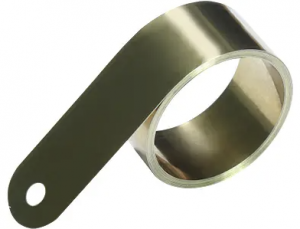Developing Robotics Skills for 2022 FRC Season
A few days ago, I read a post that another team was developing skills to build a telescoping climber. I find this interesting because we too have been developing a telescoping climber. (I’ll add pictures to this post later…)
We are using three tubes, two PCV of larger diameter and another, smaller-diameter aluminum tube. All three tubes telescope nicely and we are developing designs using OnShape (new skills for most students) to 3D print parts (another new skill, for me too – thankfully Zach, a student member of our team, has 3D printing experience).
 We are designing pulleys, two types, one that is 3D printed for direct mounting onto an axle (likely a screw) and another design that fits tiny brearings, one per side of the pully. The latter design looks good and turns freely. Regarding the former, well, we haven’t printed that yet. The intention is to wind the paracord at least once (maybe two times?) around the pulley so that the paracord won’t easily slip off. We acquired two thicknesses of kevlar, no-stretch paracord for the rigging. The thinner paracord will be used for the external rigging to extended, by pulling on external three lower-stage paracords, using either a motor or a constant force spring to power a winch. The torque / power requirement to extend a climber is much less (only the climber is being extended and it is of relatively low mass). The upper stage would be extended automatically as the lower stage extends; our rigging design deals with that.
We are designing pulleys, two types, one that is 3D printed for direct mounting onto an axle (likely a screw) and another design that fits tiny brearings, one per side of the pully. The latter design looks good and turns freely. Regarding the former, well, we haven’t printed that yet. The intention is to wind the paracord at least once (maybe two times?) around the pulley so that the paracord won’t easily slip off. We acquired two thicknesses of kevlar, no-stretch paracord for the rigging. The thinner paracord will be used for the external rigging to extended, by pulling on external three lower-stage paracords, using either a motor or a constant force spring to power a winch. The torque / power requirement to extend a climber is much less (only the climber is being extended and it is of relatively low mass). The upper stage would be extended automatically as the lower stage extends; our rigging design deals with that.
The heavier paracord is intended to compress the climber internally (from inside the concentric tubes) because, to compress, the climber requires much more torque / power because the entire robot (up to about 60 kg) is being lifted.